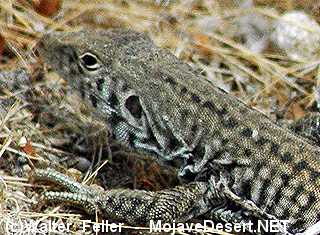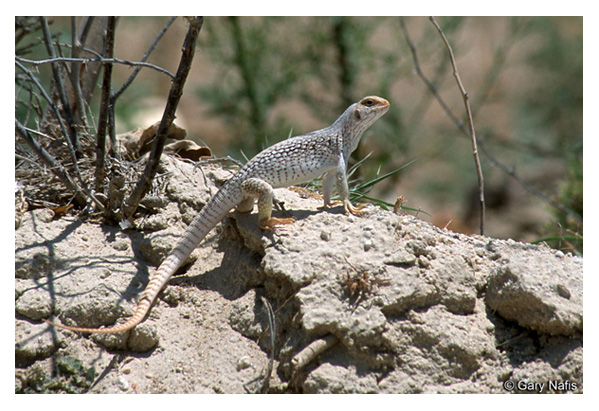Introduction:
The Mojave Black-collared Lizard, scientifically known as Crotaphytus bicinctores, is a captivating reptile found in the arid regions of the Southwestern United States. With its distinct appearance and unique behaviors, this lizard species fascinates scientists and nature enthusiasts alike. Let us explore the intriguing characteristics of the Mojave Black-collared Lizard and its importance to the ecosystem.
Physical Features:
The Mojave Black-collared Lizard boasts a striking appearance, with a dark black collar around its neck that contrasts beautifully against its vibrant, patterned body. Typically, adult males have a more prominent collar than females, making it easier to identify their gender. This medium-sized lizard can grow up to 8 inches in length, with a slender body and long tail. Its skin is covered in small granular scales, providing both protection and flexibility.
Habitat and Distribution:
These lizards are primarily found in the Mojave Desert region, which spans across parts of California, Nevada, Arizona, and Utah. They thrive in arid, rocky landscapes, where they can bask in the sun and seek shelter within crevices and rock formations. The ability of the Mojave Black-collared Lizard to adapt to such harsh environments is truly remarkable.
Behavior and Diet:
The Mojave Black-collared Lizard is diurnal, meaning it is most active during the day. It spends a significant amount of time basking in the sun to regulate its body temperature and increase its energy levels. This lizard is an opportunistic hunter, preying on a variety of insects, spiders, and small reptiles. Its diet consists of grasshoppers, beetles, ants, and even smaller lizards.
Reproduction and Survival:
During the breeding season, which typically occurs in the spring, males engage in territorial displays to attract females. These displays involve head-bobbing, push-ups, and even changing their body colors to impress potential mates. After mating, females lay a clutch of eggs in sandy soil, carefully burying them for protection. The eggs incubate for several weeks before hatching, and the young lizards are fully independent upon emergence.
Conservation Status:
The Mojave Black-collared Lizard is currently listed as a species of least concern by the International Union for Conservation of Nature (IUCN). However, it is important to monitor their population numbers and habitat conditions, as the destruction of their arid habitats could pose a threat in the future. Conservation efforts, such as habitat preservation and controlled tourism in their natural habitats, can help ensure the long-term survival of this unique reptile.
Conclusion:
The Mojave Black-collared Lizard is undoubtedly a fascinating creature, with its distinct appearance, adaptive behaviors, and important role in the ecosystem. As we continue to explore and appreciate our planet’s biodiversity, it is crucial to protect and conserve species like the Mojave Black-collared Lizard, ensuring their survival for generations to come.
Walter Feller – 2023





